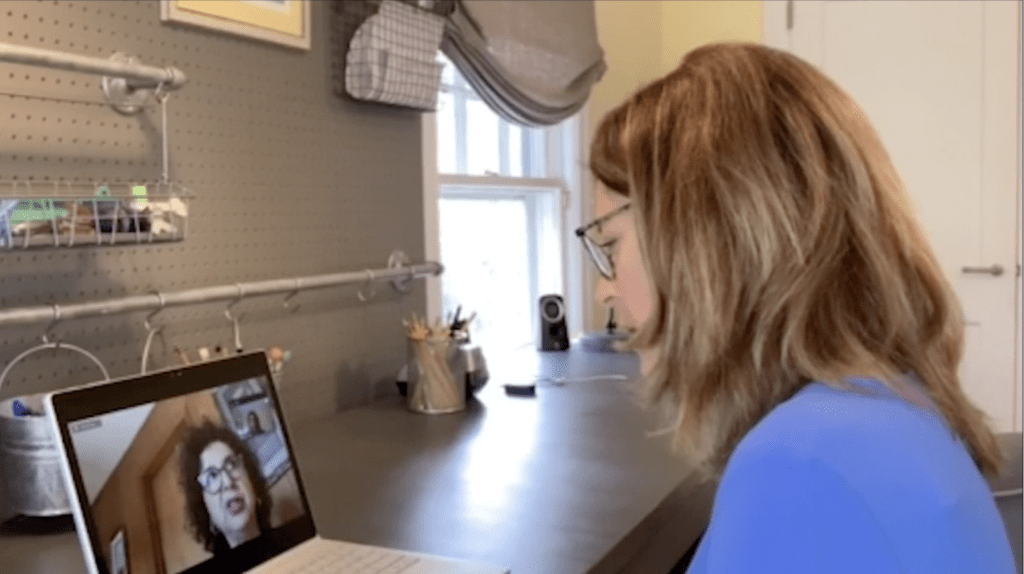Coronavirus News: Parents struggle with back-to-school decisions amid COVID pandemic, ABC News, By Stacey Sager, August 20, 2020
LONG ISLAND (WABC) — With the academic year about to begin and the debate raging whether in-person, remote or hybrid learning is best for children and staff, many parents are experiencing anxiety over how to safely proceed.
On Long Island, Noah and his little brother Ayden are holding onto summer. But their parents are feeling anything but carefree. The boys will start second grade and kindergarten, respectively, in their homes. They have siblings even younger, and older grandparents who help care for them..
“The benefit doesn’t outweigh the risk,” mom Suzanne Jaramillo said. “I think every day we would come home worried.”
For Kelly McGrath Sullivan, it’s also about risk during the pandemic.
“I can’t have those what-ifs at night,” she said. “There’s just too many of them.”
Her boys lost their father eight years ago, and they say too much is at stake now.
“I know there are other people in this situation, where you only have one parent,” son and incoming freshman Jack Sullivan said. “And I can’t go to school and bring this virus home to my mother.”
That parental anxiety swings both ways, as other parents worry what will happen if they’re kids aren’t back in school five days a week.
“For me, it’s heartbreaking because I had my child come to me and tell me he’s depressed,” mom Maria Sanders said.
Many students struggle with remote learning.
“It’s just a loss to the children,” mom Jennifer DeMos said. “They’ve wasted time, and they’ve lost learning.”
So what can parents do to get through this? Weigh the pros and cons for your own family, talk to your older kids about what they want, and ask your school district as many questions as you can.
Elissa Smilowitz, of the North Shore Child and Family Guidance Center, runs one of four free support groups for Long Island parents.
“Another fear they have is that school opens, right, and in another two weeks, they have to shut down again,” she said. “What is that going to do to the child emotionally? And also academically?”
She also warns that parents’ anxiety is often absorbed by their children, so it’s important to help them see the positive with the negative.

Making the Case for Telehealth, by Andrew Malekoff, Anton Media, July 16, 2020
Two major New York State mental health advocacy organizations—the New York State Council for Community Behavioral Healthcare (the Council) and the Community Health Care Association of New York State (CHCANY)—have made a formal recommendation that New York State permanently removes barriers to the provision of telehealth visits for all New Yorkers after the COVID-19 pandemic disaster declarations have expired.
In their recent press release on the matter, they stated: “Increased use of telehealth has allowed primary care, mental health and substance use disorder care recipients who cannot physically visit a healthcare professional in-person to use their phone or computer to access the services they need.”
At North Shore Child & Family Guidance Center, we support these efforts to ensure a comprehensive, coordinated and integrated continuum of care. I asked members of our mental health staff to share their experiences with telehealth during the pandemic so we could add our voice to the advocacy effort.
One of our staff members, Vanessa McMullan, who is a clinical social worker with special expertise in the area of postpartum depression, shared her thoughts with me. Beyond using her testimony to advocate for continued and permanent use of telehealth, I thought I would take this opportunity to inform you, my readers, about our experience in the transition to remote counseling.
As Vanessa testified: “I feel compelled to show my support in recommending that New York State permanently remove barriers in providing telehealth services for all New Yorkers following the COVID-19 pandemic.
“As a Licensed Social Worker who has been practicing for 15 years, I have seen families face many crises. With the current pandemic, it has been incredibly valuable to remain connected with clients, as well as engage new people in need of help. Without access to telehealth services, there are many families that we would be unable to monitor and help in a safe way. I truly believe that by providing essential care via teletherapy, mental health practitioners have saved lives.
“I am currently the Coordinator of the Diane Goldberg Maternal Depression Program at the Guidance Center’s Marks Family Right from the Start Center in Manhasset. We work with women who are pregnant or in the postpartum period around issues of maternal mental health. For women and families that are struggling with perinatal mood and anxiety disorders, having a baby can be overwhelming, frustrating and in some instances, unsafe. Pregnant women, newborns and young children are a particularly vulnerable population in terms of their health, and there is understandable anxiety and resistance in going anywhere that can potentially expose them to sickness.
“This means that women will defer seeking mental health treatment in order to eliminate the risk of getting themselves and their children sick.
“We have seen this situation before as it relates to reaching these women soon after they give birth, as the recommendation has been not to bring the baby into public areas before they start receiving vaccinations at eight weeks old. This has caused some mothers to delay treatment, since they do not want to risk bringing their baby, but also have no one to leave them home with. Similarly, we have had mothers cancel sessions due to rain or snow, or predicted rain or snow, due to anxiety about bringing the child out in bad weather. They have verbalized it as being ‘selfish’ to bring the baby out to do something for themselves, in case something bad happens while on the road. These women are typically those who need services the most.
“Families have expressed relief in knowing that they are still getting the mental health services they need without bringing their baby to an office or clinic that could have serious implications. We are having ongoing conversations and processing if/when things will be safe again.
I think it’s important to realize that when the declaration expires, it does not mean that the crisis is over. Trauma lingers. We need to ensure that people will still be able to access services, and by allowing telehealth to continue, these efforts will be supported.”
By removing the barriers to the permanent use of telehealth and reimbursing telehealth visits on par with in-person visits, New York will go a long way to advancing a comprehensive, coordinated and integrated continuum of mental health care.
Andrew Malekoff is the Executive Director of North Shore Child & Family Guidance Center, the leading children’s mental health agency on Long Island. The Guidance Center is seeing new and existing clients via telephone and video during the COVID-19 crisis. To make an appointment, call (516) 626-1971. Visit www.northshorechildguidance.org for more information.
Goodbye, germs! A coloring book about staying clean and safe from coronavirus germs
Cohen Children’s Northwell Health Coloring Book makes it easy to talk with your kids about COVID-19. Click Here to Download this coloring book made just for them in an easy to read format.
47354_coloringbook_w305478_corona_kid_master_21mar2020_all-coloring-pages
Covid-19 PTSD is Inevitable, Nikki on the Daily blog, July 2, 2020
As COVID-19 cases begin to surge across the country, again, questions surrounding when life will truly return to normal rise along with it. And yet, our current plight is anything but a mystery. Did we really think we had this thing beat in less than four months? Was reopening such a good idea?
As New York State’s numbers, once the epicenter of the pandemic, continue to decline the only thing that everyone (well, almost everyone) can agree on is that, no matter where you are, this is still far from over. In addition to the virus itself, according to the American Psychological Association COVID-19 aggravates existing mental health problems while potentially onsetting new symptoms– symptoms that can outlast the virus.
There is a universal trauma happening.
It’s been well documented that trauma occurs from war, oppression, natural disasters, and individual experiences. The current pandemic is no different, except it is a “mass trauma” filled with “anticipatory anxiety” on a worldwide scale. Without a cure or vaccine, society collectively wonders– will it come back? Is it safe to reopen? As more people file for unemployment and businesses continue to shut their doors, physical recovery is compounded with an eye on financial recovery. These anxieties are known as “peritraumatic”, occurring around the time of trauma in the form of intrusive thoughts.
Jessica Corea, a Licensed Mental Health Counselor, explained, “The world is experiencing a unifying trauma of loss and uncertainty. Patients are facing anxiety, depression, and financial stress all at the same time while trying to adapt to a new normal.” Even when the pandemic itself passes, it is sure to leave mass emotional destruction in its wake in the form of Post Traumatic Stress Disorder (PTSD), a classified mental disorder in the Diagnostic and Statistical Manual of Mental Disorders. Like any radical shift, the traumatic effects can go on for years.
Posttraumatic Stress Disorder can happen to anyone.
“Previous epidemic studies report high prevalence rates among people exposed to the trauma resulted from an infectious disease epidemic,” the National Center for Biotechnology Informationreported on June 5, 2020. Just like SARS, MERS, and HIV/AIDS, COVID-19 survivors are most at risk for PTSD, followed by family members who directly witnessed a loved one suffer or die, medical workers, and the general public. Further, the psychological trauma was categorized into three groups. First, directly experiencing the symptoms. Next, witnessing those who struggled. And third, experiencing a “realistic or unrealistic fear of infection, social isolation, exclusion, and stigmatization.” Essentially, like the virus itself, everyone is at risk.
“There is now a new normal that may be with us for a long time. Just as 911 impacted our lives in many ways so has this pandemic. I would certainly call this a traumatic event that has impacted everyone,” noted Elissa Smilowitz, Director of Triage and Emergency at North Shore Child & Family Guidance Center on Long Island.
Health experts across the globe are now preparing to treat patients with COVID-19 PTSD. Except the underlying issue is that PTSD symptoms don’t begin to develop until weeks or months after a traumatic event, and we are still in the middle of the pandemic itself. So, when does peritraumatic end and posttraumatic begin?
Medical News Today explains the four symptom types of PTSD are reexperiencing trauma, avoiding situations, negative changes in perception, and hyperarousal, in the forms of nightmares or flashbacks. Michigan Medicine’s Department of Psychiatry also reported, “PTSD is also associated with exaggerated activity in the brain networks associated with processing threat-detection and negative emotional responses.”
Reopening is contributing to a societal anxiety.
As cities across America roll back reopening, the response to COVID-19 is still being tackled on a state by state level. New York recently put gyms and malls on an indefinite pause while its New Jersey neighbor halted indoor dining. Meanwhile, in a reversal of events, New Jersey greeted shoppers at the local malls as Long Islanders enjoyed indoor dining at 50% capacity. In addition, New York, New Jersey, and Connecticut are now mandating a 14-day quarantine period for anyone traveling from 16 states– that’s double the amount originally reported only a week ago.
“The pandemic has really caused mental health struggles that I’ve never experienced. After postponing my wedding twice and losing two grandparents to COVID, all in less than a month, it feels strange that the world is trying to go back to normal so fast,” Long Island native Melissa Navon expressed of her personal struggles. “Nothing feels normal for me and the threat isn’t over yet. It’s difficult to explain how that feels to others who haven’t been personally affected. Many young people don’t think they need to wear masks. What they don’t understand, for some reason, is wearing a mask will protect those at risk. People like my grandparents might have survived this pandemic if everyone took the proper precautions.”
With no sense of stability or continuity mindsets are becoming increasingly fragile. After months of self-isolation reopening became a source of hope. The phases were planned, something to look forward to. Smilowitz said, “Some families are recognizing that the reopening is a good sign. However they are still anxious about whether these safety protocols will be enough.”
Focus on what you can control.
Beyond wondering how to behave there is continued concern over others behavior as well, as mask shaming trumps even political agendas. But the longer the pandemic goes on the less secure it all feels. Society is losing trust with its government and health officials, as new information spreads on a daily basis. Without a sense of guidance the internal battle to feel some sort of normalcy is lost.
Corea explained that early in the pandemic “patients were experiencing guilt for small aspects of joy” while others were suffering. Throughout, it has remained important for individuals to find balance and process fluctuating feelings. “It can shift within minutes given the current circumstances. Patients are encouraged to prioritize self-care and avoid running themselves down so they can be fully present, even if that means making a difficult decision to say no to others and setting more boundaries.”
Unlike scenarios of the past, isolation has been a key factor of the pandemic making traditional stress management unattainable. Something as simple as seeing loved ones can onset anxiety. But there are ways to cope.
“These thoughts don’t serve you. Live in the present, do not dwell. Having some control in your environment helps you feel more grounded and less anxious. Go slow, maybe just do one thing you would like to do and see how it feels,” advised Smilowitz.
How will we navigate PTSD in a post COVID world is yet to be seen, but experts across the board agree that for a large percentage of humanity it is inevitable. For a comprehensive list of ways to get ahead of COVID-19 PTSD, visit the U.S. Department of Veteran Affairs National Center For PTSD.
Coronavirus Anxiety Workbook in English and Spanish
Click Here to View Full PDF and to DownloadCoronavirus-Anxiety-Workbook Click Here to View Full PDF and to DownloadSpanish-Managing-Coronavirus-Anxiety-Workbook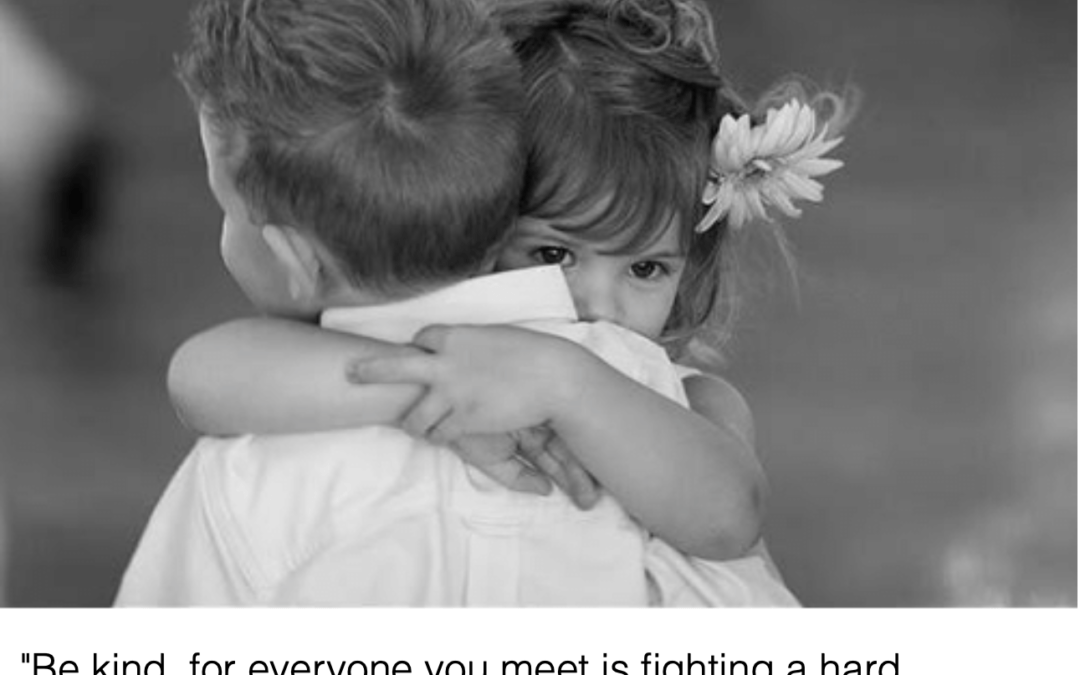
Practice Compassion By Wearing Masks, By Andrew Malekoff, Blank Slate Media, June 15, 2020
Something’s been bothering me. It’s been festering since Memorial Day Weekend.
It was crystallized for me the other day when I turned the corner after walking just a few blocks from my home on my way to the neighborhood grocery store.
As I turned the corner, I spotted some activity in front of the new lunch spot that had just opened the day before. The menu looks appetizing: cheese steaks, burgers, salads, foot-long hot dogs, wings, tenders, fries and a variety of toppings.
There’s been a lot of turnover in that space over the years. Most recently it was a fancy taco spot and before that the specialty was grilled cheese. Years before there was a Subway there. The building itself is narrow with limited seating, including a few tables situated outside. There is some competition on the strip: a top-notch Jewish deli, Chinese takeout, a pizza joint and a Tex-Mex restaurant.
As I walked towards the sandwich shop, I spotted five young boys about 13 years old. They were sitting around a small table, no masks and inches away from one another.
I told this story to a few friends and there was an instant flash of recognition, suggesting that this is going on all over and not just with kids.
Everyone had a story, including one about group of Wall Street guys having a few drinks and a meal after a round of golf. They were situated in the same tableau as the teens, sitting casually around a dinner table, only in a fancier setting.
When I walk or ride my bike around town, I see people of all ages gathering closely together, no social distancing and no masks. Now that’s not everybody, for sure. But there are too many. Too close for comfort.
I imagine you have viewed the scenes of throngs of young adults sun bathing in a pool at the Lake of the Ozarks, Mo. The worldwide protests in the aftermath of the George Floyd killing seemed to bring everyone together and united in outrage in the fight for racial justice. And soon there are expected to be partisan rallies with packed houses of people who are being asked to sign disclaimers in the event that they become infected and seriously ill with COVID-19.
In all these situations – frivolous, deadly serious or politically motivated, the issue is not so much about only protecting oneself but protecting those with whom you come in contact after these gatherings – your loved ones, friends, colleagues, neighbors and strangers. No disclaimer protects them.
It is no surprise that with the beautiful weather and people having been sheltering-in for months, everyone was ready to be released and feel the freedom of walking the streets again, gathering on the sidewalks with neighbors and heading for the open spaces of local beaches, parks, playgrounds and ball fields.
And so many have been out of work for such a stretch that along with the freedom has come a return to work for the people whose jobs did not permit them to work remotely from home.
Kids were not allowed to finish their school years and for many their homes became pressure cookers as opposed to sanctuaries. We have all been more that ready to break out, spread our wings under the sun and embrace family and friends.
The timing for “opening up” has been influenced by an amalgam of science, politics, business, faith and personal belief. I believe strongly that opening up prematurely without adequate testing and contact tracing as well as consistent wearing of masks and social distancing is a formula for trouble and puts everyone at risk.
Nevertheless, I am afraid that complacency has set in.
Thinking back about the young teens sitting around the table at the cheese steak spot, I wondered to myself, what will it take for people of all ages to become aware of the potential consequences of such behavior? A vaccine may be our savior in the end, but why don’t we begin by practicing compassion?
What this means is first practicing self-compassion, taking good care of oneself. Then, listen generously, try to be fully present and practice putting yourself in someone else’s shoes. As the saying goes, “Be kind, for everyone you meet is fighting a hard battle.”
In more present terms practicing compassion is simple: Wear a mask and keep your distance. That’s being kind. We are not nearly out of the woods. Not just yet.
Andrew Malekoff is the executive director of North Shore Child & Family Guidance Center, the leading children’s mental health agency on Long Island. The Guidance Center is seeing new and existing clients via telephone and video during the COVID-19 crisis. To make an appointment, call (516) 626-1971. Visit www.northshorechildguidance.org for more information.
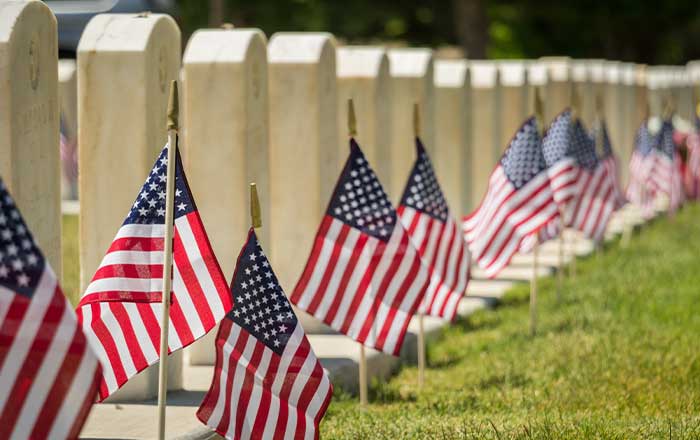
Every Day Is Memorial Day, By Andrew Malekoff, Blank Slate Media, May 24, 202
As I write this on the morning of May 25, 2020, I’m struck by what a different Memorial Day this is compared to what we have become so accustomed to. For the most part, there are no large gatherings on the beach; no parades led by high school bands; no throngs of people lining the streets, standing shoulder to shoulder and cheering on our war veterans; no big blowout shopping sales for furniture, home décor, cars and lawn equipment; and no family and friends’ barbecues without masks and social distancing (for those committed to practicing safety and sanity over vanity).
Yet Memorial Day remains the one day each year that we as a nation explicitly honor the more than one million Americans who died defending the United States beginning with the Revolutionary War of 1776, all the way through recent wars launched in response to the Sept. 11, 2001 attack on America.
For the uninitiated, I learned firsthand after my father died in 1994 that funeral flags are presented to the next of kin of deceased veterans who served honorably in the U.S. Armed Forces to honor their military service to his or her country.
It is a tradition among the family members to preserve their loved one’s flag for display. This year and every year on Memorial Day, in honor of all those who made the ultimate sacrifice, I display the burial flag that I was presented at my dad’s funeral in 1994.
I imagine my father, who was a part of what has become known as the Greatest Generation, would be proud to know that his flag, now faded from years of use, has been displayed again this year, at a time when the term memorial has additional meaning for hundreds of millions of Americans.
According to MilitaryTimes.com, “The fatality rate among Veterans Affairs patients continues to rise, with a significantly higher percentage of veterans stricken with the illness eventually succumbing to the disease than in the rest of the general public.”
Let me be clear that most of those who are dying and were lost to the pandemic, including our brave front-line medical personnel, are not casualties of armed conflict and their losses should not be conflated with the sacrifice of the war dead. Yet who can help but not think about them today, if even fleetingly.
Death is in the air.
Their loved ones have suffered a traumatic loss as have our Gold Star families, compounded by the fact that many could not be at their loved ones’ bedside in the end or partake in routine customs and rituals that typically follow a loved one’s death.
A variation of a line attributed to Joan Didion comes to mind: When a single person dies, the whole world is empty.
Grief is in the air.
Traumatic loss refers to the traumatic reaction an individual may have after a sudden and unexpected death or even a death that was expected. It involves both the yearning generated by the deep distress of separation as well as the disbelief and loss of hope that traumatic stress can generate.
Grief never goes away. Which is why days like Memorial Day that affirm it are so important, even though such days are never quite enough.
Each year this national day of mourning brings us together in body, mind and spirit, close up or six feet apart, to talk about and remember those who sacrificed everything. It is a day that offers the bereaved communal support and helps to reaffirm and re-establish a sense of community that is so critical to restoring a sense of hope.
Although there are the familiar social rituals that can help to support mourners through the process of normal bereavement, there is no custom or common ritual that recognizes the mourning that follows traumatic life events like armed combat, a terrorist attack, a natural disaster or the invasion of a microscopic mass killer.
Memorial Day alone is not enough to remember and honor our fallen heroes.
Remember them every day.
And whenever the day comes that we look back and remember those who perished in the pandemic of 2020, it will not be enough for a national holiday to incidentally evoke their memories.
Get a head start. Say a prayer or meditation for them today and every day.
Andrew Malekoff is the executive director of North Shore Child & Family Guidance Center, the leading children’s mental health agency on Long Island. The Guidance Center is seeing new and existing clients via telephone and video during the COVID-19 crisis. To make an appointment, call (516) 626-1971. Visit www.northshorechildguidance.org for more information.
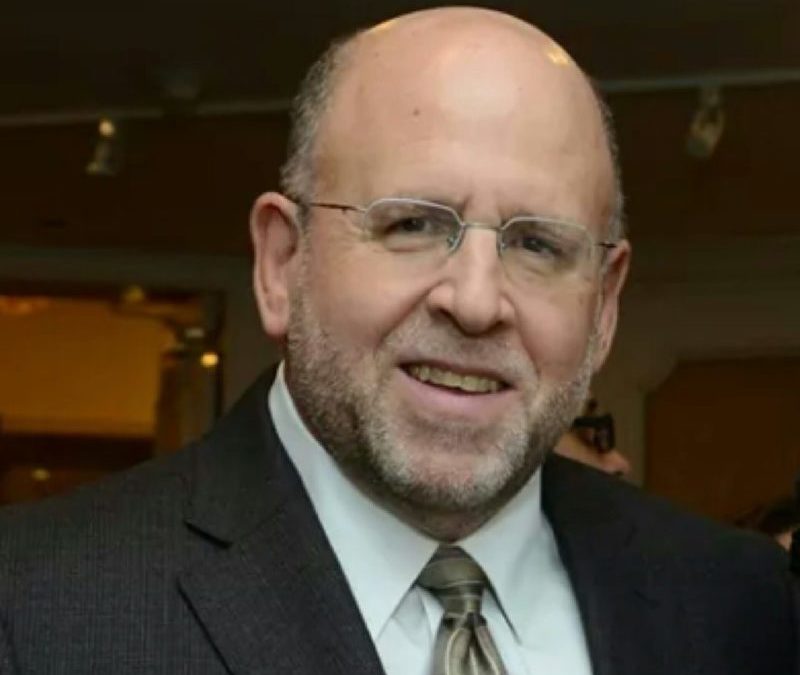
Astonishing COVID-19 numbers for U.S., New York and Long Island, by Andrew Malekoff, Blank Slate Media, May 16, 2020
I celebrated my birthday on May 14 in the year of COVID-19.
My wife Dale and I usually go out with friends for our birthdays. Obviously, that wasn’t happening this year. So, we ordered in from one of our favorite Italian restaurants. I had baked ziti and Dale had seafood over pasta. We had a seven-layer cake for dessert.
It was a beautiful day all day, sunny and in the fifties. Some would say too cool for the spring, but perfect for me. After working remotely all day I took an hour-long walk.
Of course, walks now involve masks and neighbors dodging one another as if we all have some kind of disease. Then again, that’s the point. Maybe we do.
For my birthday, I assigned myself a research project.
I thought it would be interesting to get further perspective on current circumstances, by conducting a country-by-country, worldwide comparison of confirmed COVID-19-positive cases, against the New York Metro area numbers of the same.
Worldwide there were 4,294,101 confirmed cases of infection on May 14. My study includes only countries with more than 10,000 confirmed positive cases, interspersed with numbers from a few nearby places that we are all familiar with.
The United States leads the way with 1,420,000. But, before any other country enters the mix, I discovered that New York State at 340,661 cases leads the next country on the list, which is Russia at 242,271, followed by Spain, the United Kingdom and Italy at 221,216.
To be clear, I’m not including a population comparison or accounting for underreporting or variable rates of testing. Just raw numbers.
Next on the list is New York City (all five boroughs combined) – I want to be a part of it New York, New York – at 188,545, beating out Brazil and Germany, both in the 170,000s and topping the State of New Jersey – ba da bing – at 141,560 barely topping Turkey and then followed by France, Iran and the People’s Republic of China.
China reports 84,464. How can that be right?
Less than 10,000 behind China is Long Island at 75,892. We’re less than 10,000 behind? How did that happen?
Close behind Long Island is India at 74,281, followed by Peru and Canada. Just topping 70,000. Before we get to the next country – Belgium, Queens, comes in at 57,748, which is followed by Brooklyn at 50,667 – Fuhgeddaboudit.
Saudi Arabia and the Netherlands are in the low 40,000s just before Nassau County which is at 38,587, a few strides ahead of Mexico and, followed by Suffolk County at 37,305.
Among the countries that follow Nassau and Suffolk Counties, all with more than 10,000 and in descending order, are Ecuador, Switzerland, Portugal, Sweden, Qatar, Belarus, Singapore, Ireland, United Arab Emirates, Bangladesh, Poland, Israel, Ukraine, Japan, Austria, Romania, Indonesia, Colombia, South Africa, Philippines, Dominican Republic, Kuwait, South Korea, and Denmark.
I thought it was astonishing that after the United States, which tops the list, that New York State, New York City and New Jersey were among the top 10; Long Island and Queens in the top 20; and Brooklyn, Nassau and Suffolk Counties all in the top 26 worldwide.
Happy birthday to me.
Andrew Malekoff
Andrew Malekoff is the executive director of North Shore Child & Family Guidance Center, the leading children’s mental health agency on Long Island. The Guidance Center is seeing new and existing clients via telephone and video during the COVID-19 crisis. To make an appointment, call (516) 626-1971. Visit www.northshorechildguidance.org for more information.
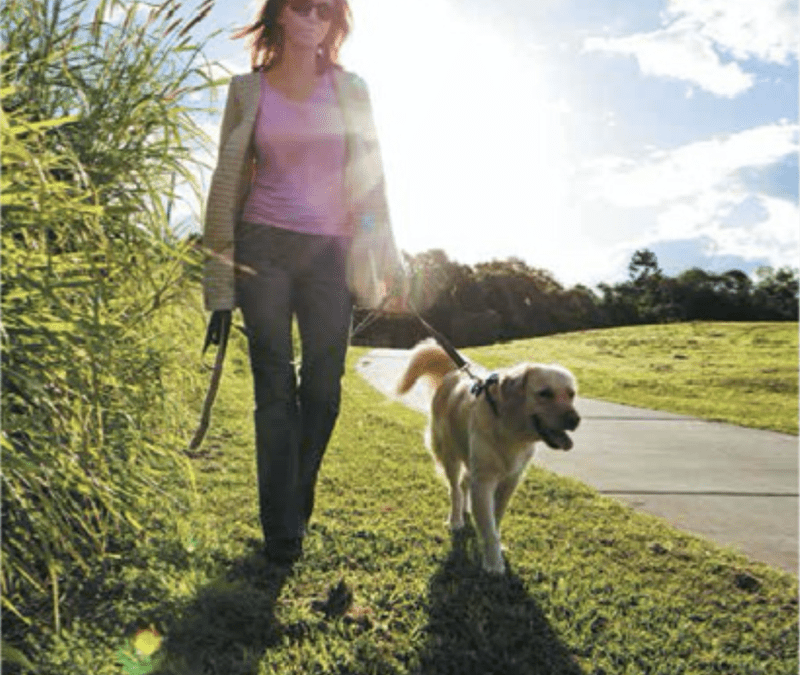
Give Yourself – and Your Kids – a Break
LIBN Column April 15, 2020, By Jenna Kern-Rugile
Rumor has it that Shakespeare wrote King Lear during the plague. So, how’s working at home during our modern day plague going for you?
Social media and other sources are replete with articles about how you can use your time during the pandemic to be more productive. Not only are you supposed to be working remotely at full capacity – or even harder, because, after all, it’s a time of crisis for your company– but you’re told it’s a great time to learn a new hobby, declutter your closet, get in shape and, while you’re at it, write that play or novel that’s been brewing in the back of your mind.
While you and your family are experiencing one of the most stressful, uncertain and challenging times in our country’s history, you are being encouraged to tackle your to-do list and use all of those “extra” hours to accomplish more than ever.
Really?
The truth is, we are all in survival mode. Not since 9-11 have we felt a similar shock to our systems and existential threat to our welfare. And, with no definitive end to this period of isolation and upheaval in sight, you are bound to be way more than a little off your game.
The roles we use to define our worth—our ability to earn a living, to protect our families, to provide an education for our children—are under threat. A large part of our identities are based on interactions with our colleagues, friends and family. But the need for social distancing has thrown those foundational elements of our lives into chaos.
While the chances of you or a loved one dying from COVID-19 may be relatively small in stark terms of percentages, it’s not at all unreasonable to be so frightened that focusing on even simple tasks is difficult.
Bottom line: Now is not the time to put pressure on yourself to be a superstar. Give yourself—and your employees, bosses, kids and everyone else—a break. If you’re working from home, expect to be less productive than usual. We’re all living through a period when our bodies and minds are on high alert. It’s normal to feel overwhelmed. In fact, it would be unnatural to feel otherwise.
If you’ve got kids at home, the challenges are multiplied. You’re now expected to be teacher, playmate and parent. If you work on the front lines, or in a grocery store or any other public-facing job, you’re putting your health at risk. And your financial portfolio has likely tanked.
For everyone’s sake, adjust your expectations. Expect your kids to be more clingy and anxious than usual. Expect them—and yourself— to be more tired or easily triggered to anger. Let your loved ones express their feelings, and talk to someone about your own. Tell your kids it’s normal to be frightened, but reassure them that the best scientists in the world are working on solutions, and that we will get through this.
Instead of training for the marathon, focus on the basics for you and your family: Eat healthy foods, mostly. Take some walks (dogs are loving this). Get up from your desk and stretch. Play ball with the kids. Allow yourself to get some extra sleep. Keep clearly defined work hours. Limit your news consumption to a “need to know” basis.
Don’t isolate. Use technology to stay in touch with peers, friends and family. Texts aren’t enough. Use Zoom or FaceTime so you feel truly connected. And when speaking with your co-workers, ask them how they’re doing.
We’re in uncharted territory, and there’s no right way to cope. This is a time when doing the best you can is a perfectly acceptable goal.
Bio: Jenna Kern-Rugile is Director of Communications at North Shore Child & Family Guidance Center, a children’s mental health agency that serves all of Nassau County. The Guidance Center is seeing new and existing clients via video and phone while its buildings are closed. For more information, visit www.northshorechildguidance.org. To schedule an appointment, email info@northshorechildguidance.org or call (516) 626-1971.
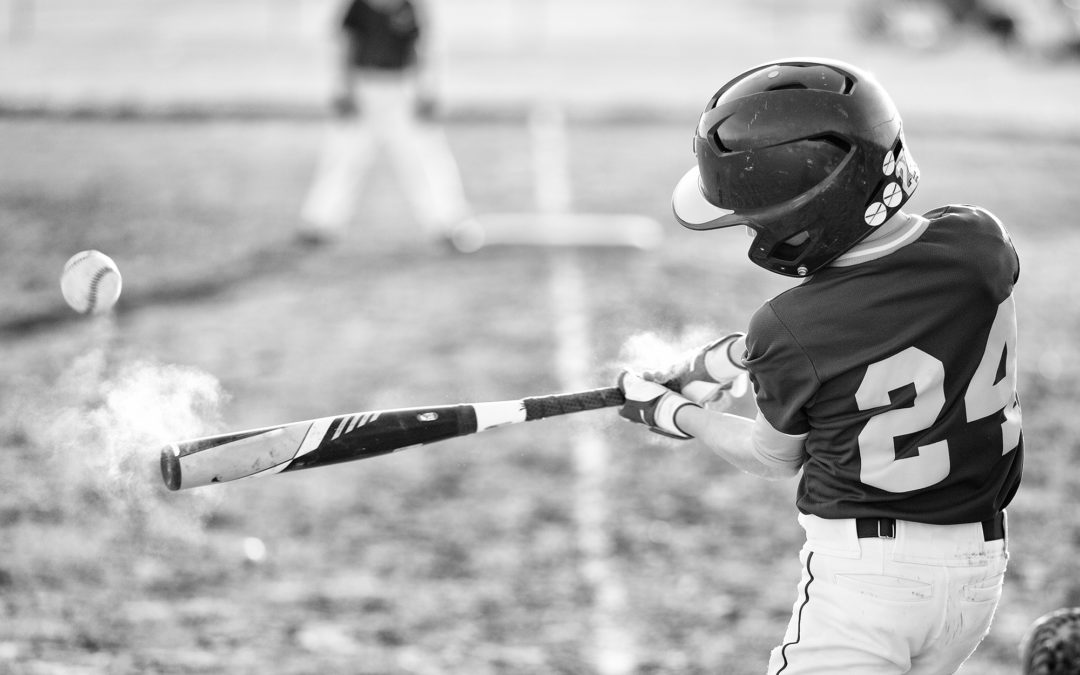
Checking the Coronavirus Box Score, Published in Blank Slate Media, By Andrew Malekoff
As a child growing up in New Jersey in the 1950’s and 60’s, one of my favorite things to do when school let out for the year was to get up, ride my bike to the candy store, meet up with friends, pick up a newspaper and check out the baseball box scores from the previous night’s games.
I liked reading about my favorite players. I’d check their batting averages, earned run averages, runs batted in, stolen bases and home runs.
I cannot fully imagine what it is like to be a kid today, at a time when school let out for the first time I can ever recall for reasons other than the school year coming to its natural ending. Rather, it came to an abrupt end for reasons of health, safety, life and death.
That’s a lot for a kid to handle.
The end of school was always bittersweet for me. I was happy and relieved to get a break from the daily routine, and sad to say goodbye until September. It was a ritual that was a normal part of growing up. It was also a far cry from leaving with no decent goodbye and no baseball or box scores to look forward to—only an inescapable sense of incomprehensible dread.
Riding one’s bike to a store of any kind today requires, in addition to a helmet, wearing a mask and gloves and staying six feet apart from everybody else, including your best pals.
As for box scores, the only one you can find in print or on social media these days is a list of states, cities, towns and villages and the corresponding number infected and dead.
Our children left school unceremoniously amid a global pandemic. Whether they say it in so many words or express it through their behavior, don’t lose sight of the fact they are experiencing loss and are grieving all that has been taken from them.
Our kids fear for the future. And you don’t have to say a word for them to see how this is affecting you and how you are managing your own stress and uncertainty.
Although keeping routines at home can help, to whatever extent our kids experienced a sense of normalcy in their lives, their lives are no longer the same. If there was tension in your home before the shutdown, it has likely intensified. Where there were little or no fears about mortality, they may now be pervasive. Loss is a key theme; the loss of normalcy, a sense of safety and hope.
What to do? Try your best to be attuned to and manage your own anxiety. Remain calm. Don’t force, but encourage your children to express their feelings. How? By striving to be a good listener. Do your best to provide them with honest and accurate feedback and information. Be reassuring and hopeful. Limit media exposure (box scores included). And, finally, don’t hesitate to seek outside professional help, which is now available by phone and video conferencing through North Shore Child & Family Guidance Center.
If there is an opportunity, model and encourage kindness wherever and whenever the opportunity presents itself. To paraphrase Mother Teresa, acts of kindness may seem simple, but their echoes are endless and hopeful.
Andrew Malekoff is the executive director of North Shore Child & Family Guidance Center, the leading children’s mental health agency on Long Island. The Guidance Center is seeing new and existing clients via telephone and video during the COVID-19 crisis. To make an appointment, call (516) 626-1971 or email info@northshorechildguidance.org. Visit www.northshorechildguidance.org for more information.
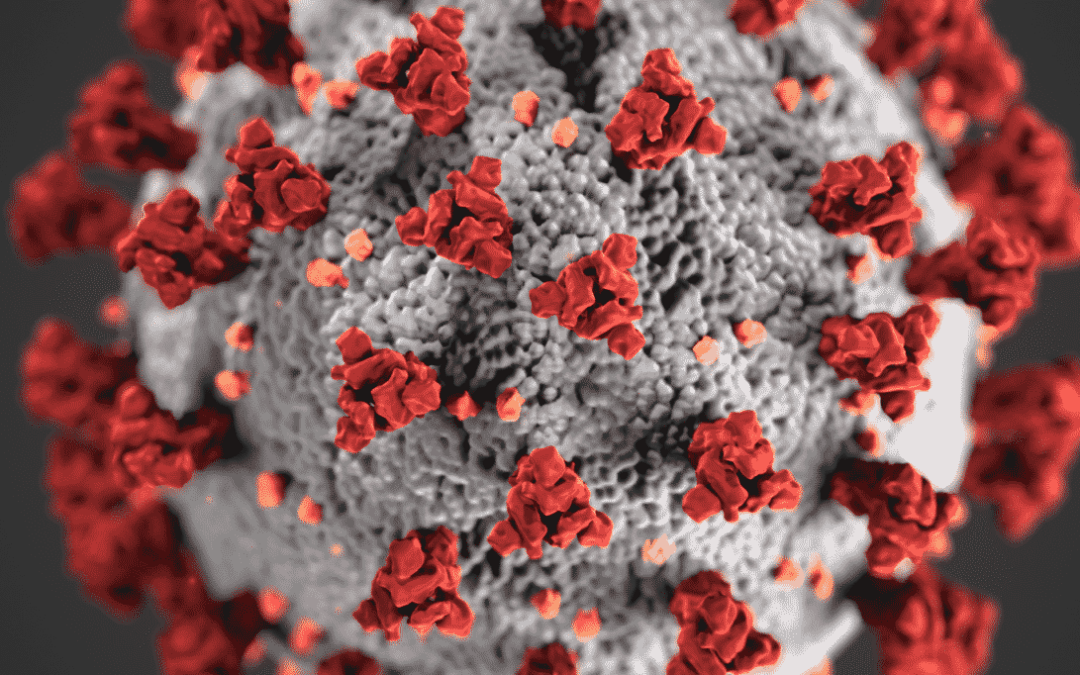
A Quarantine Trendsetter, By Andrew Malekoff, Anton Media, April 13, 2020
In my February column, I wrote about the fact that I had a stem cell transplant in early December 2019, about a month before I heard for the first time about the coronavirus.
The transplant entailed getting an unrelated donor’s stem cells to replace mine; then, if all went according to plan, these cells would grow into a new immune system to seek and destroy my cancer cells.
As a result of the transplant, all of my childhood vaccinations became ineffective. I was instructed to stay in isolation for at least four months in order to avoid infectious and possibly deadly diseases like influenza. Consequently, I have been quarantined since December.
Just a day before writing this, a friend told me that I’m a “trendsetter.”
I knew very little about viruses before the coronavirus came along—only that they were microscopic infectious organisms that invade living cells and then reproduce. In an effort to review what I had been (mostly unconsciously) protected from before transplant, I Googled the Centers for Disease Control and Prevention (CDC) and found a piece entitled, “Vaccines for children: Diseases you almost forgot about.”
I was reminded that most of us had vaccines as children for some of the nastiest viruses, including polio, which invades the brain and spinal cord and leads to paralysis; tetanus, a potentially fatal disease that causes lockjaw; whooping cough, which can lead to violent coughing that makes it difficult to breathe; and many more.
Most older adults are familiar with chicken pox, mumps and measles. I had two of them as a young teenager. One that I forgot about is diphtheria, which affects breathing or swallowing and can lead to heart failure, paralysis and death. There are several more.
I imagined the panic that parents must have felt and the pain that young children must have experienced before vaccines were discovered to prevent these horrible infectious diseases.
For the time being, I cannot replace my old vaccines. I must wait for at least one year while my new immune system gets stronger.
The idea of being in isolation and maintaining a safe social distance for a few months post-transplant made sense to me. I was well prepared by doctors and nurses and I knew my wife would be a great caregiver, so I thought I could do the time.
And then, the coronavirus came along.
For me, being quarantined was an old hat by the time a national emergency was declared and everything started to shut down. I learned that this new virus’ main target was the lungs and people older than 60 years with underlying health conditions were its primary targets.
I fit the bill and knew that I’d have to do more time: at least another three months, my transplant doctor told me. The only difference is that this time, hundreds of millions of people would be joining me.
I was well-prepared before and after my transplant. I knew why I had to self-isolate and for how long. No one, including me, was prepared for COVID-19 and the mass quarantine that it now requires—not only to protect oneself and one’s family, but also to protect strangers. Mostly older strangers like me.
Scientists and other health professionals were the heroes of viral epidemics gone by. I do believe we will get through this, with people like immunologist Dr. Anthony Fauci leading the way.
Still, the unknown is what is most frightening. We all want answers, yet some remain illusive at the moment. This is an opportunity for all of us to strengthen our tolerance for ambiguity.
When will this end? No clue. Will it come back? No idea.
Although my new immune system needs more time to protect me, I just found out after a PET scan that I’m in complete remission from my cancer.
Will it come back? No idea.
We are all in the same boat, living in uncertainty, whether young or old, healthy or unwell. As Plato said, “Be kind, for everyone you meet is fighting a harder battle.”
Andrew Malekoff is the executive director of North Shore Child and Family Guidance Center. To find out more, call 516-626-1971 or visit www.northshorechildguidance.org.
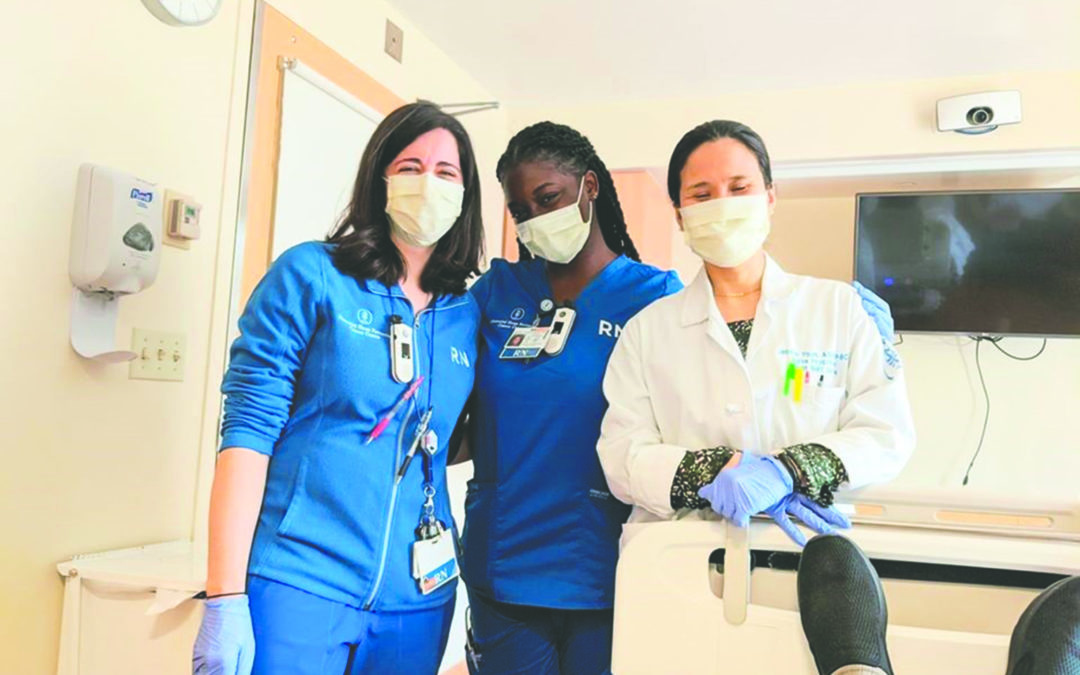
Strength In Diversity, By Andrew Malekoff, Anton Media, February 16, 2020
In my August 2019 column titled “Thank You,” I expressed my gratitude for the cancer researchers and practitioners who have been instrumental in getting me through the last 10 years of my life. As I explained, my cancer was responsive to treatment, but it was persistent and kept reemerging.
Since that piece was published, it was determined by my “team” that I was eligible for an allogeneic stem cell transplant, which meant getting someone else’s stem cells to help rebuild my immune system. Although this is a risky treatment, it does offer the possibility of a cure, which routine chemotherapy and immunotherapy do not, at least not for my type of blood cancer.
The team thought that given my age and overall good health and fitness, this was the best window within which to proceed. After considering all of the information with my family, I agreed.
The transplant was scheduled for December and required that the hospital find a non-related donor. I was fortunate enough that a stranger was discovered through the donor registry.
I spent three mostly difficult weeks in the hospital. The first phase was “conditioning,” in which I received high doses of chemotherapy and total body irradiation. Next came the transplant. The final and longest phase, which I am in now, is recovery. There is the risk of “graft versus host disease”– the possibility of the new cells not only attacking the cancer, but other organs in my body—which is part of what recovery aims to prevent.
Currently, I am vulnerable to many ailments and illnesses as I have the immune system of a newborn baby. It will become stronger over time, and eventually I will receive all of the childhood immunizations, which are now rendered useless.
This is all background that leads to what I really want to talk to you about: my experience with the personnel involved in the transplant.
The three nurses depicted in the photo, along with an attending physician (not pictured), presided over my stem cell transplant on Dec. 12, 2019, at Memorial Sloan Kettering Cancer Center in New York City. Some consider transplant day to be a new birthday. So now, I have two. I don’t know the identity of my donor, although there is a process in which I can communicate with that person to thank him or her directly if I so choose, in due time.
Obviously, as the photo reveals, the nurses are a diverse group. At the time of transplant, I asked them a little about themselves. Among the three nurses are a Muslim, Christian and Buddhist. The attending physician is Hindu. I am Jewish. There are racial and ethnic differences as well.
I teared when I said, “With all that is happening in the world, all of the hate, you represent the truth about the value of diversity.”
With their permission, I snapped this photo with my cell phone from my hospital bed. Amid the rampant and unrelenting stories of hate, this is a graphic reminder that diversity is our strength.
We cannot afford to squander it.
Andrew Malekoff is the executive director of North Shore Child and Family Guidance Center, which provides comprehensive mental health services for children from birth through 24 and their families. To find out more, visit www.northshorechildguidance.org.
Coronavirus News: Families turning to virtual therapy for kids during COVID-19 crisis By Stacey Sager Tuesday, April 14, 2020
LONG ISLAND (WABC) — Kids aren’t out on the playgrounds, and they aren’t inside their schools as a result of COVID-19.
Several weeks into this pandemic, some families may be settling into this new norm — but others are reaching a crisis point.
“We’re getting a lot of referrals from urgent care, where they are trying not to hospitalize the kids, and they’re sending them to us,” Regina Barros Rivera said.
Barros Rivera is with the North Shore Child Family Guidance Center in Nassau County, and she highlights some of the more urgent warning signs.
“They’re beginning to isolate, they’re not sleeping, they’re having passive thoughts of suicide or self harming,” Barros Rivera said.
But she says there’s help virtually. In fact, many therapists are fully up and running now and are even doing intake for new, young patients.
For the Stensland family in Huntington, it was a matter of continuing a group friend session for their 12-year-old son Jimmy.
“I should be interacting a lot more with my friends via text, email, phone calling,” Jimmy said.
Jimmy’s mother Gina Stensland said she thinks sometimes kids need to be reminded.
“It’s so easy to be so lazy once your school work is done,” she said.
Jimmy’s virtual help comes from a group called Kidz Helping Kidz in Melville. That’s where Sarah Wagenberg and her family turn, as well.
“I think as a mom, it’s been hard just trying to keep everyone occupied, get a sense of routine,” Sarah’s mother Marissa Wagenberg said.
The issues range from frustrations due to online schoolwork to more serious health issues that are plaguing families everywhere.
“I have some kids who actually have parents that have the coronavirus, so they talk about that,” Kidz Helping Kidz mental health expert Dana Kane-Glickman said. “They’re very concerned, will we ever go back to school? Will life ever be normal again?”
The pleasant surprise is that they say virtual support is much more helpful than they thought.
Therapists are also getting a glimpse of family dynamics at home in a way they’ve never seen before.
Guidance Center Responds to Coronavirus Crisis, By Andrew Malekoff, Anton Media, April 22, 2020
As the Coronavirus pandemic has come to dominate a good deal of our daily lives, are we, as Dr. Suzan Song suggests in U.S. News and World Report, “on the brink of a mental health pandemic that our current system is not equipped to handle?”
Recent polling by the Kaiser Family Foundation found that almost half of U.S. adults said the pandemic has affected their mental health, while more than half believed that they would be exposed to COVID-19 because they could not afford to stay at home financially.
At North Shore Child & Family Guidance Center, where we work with children, teens and their families, we’ve made the transition from face-to-face office, home and school-based visits to remote video conferencing sessions. Although we didn’t formally poll the families we work with, judging by feedback from our therapists, the mental health impacts of COVID-19 are pervasive.
Most of the children we see haven’t come to us because of COVID-19 fears, although we are starting to get referrals specifically related to the pandemic. Nevertheless, everyone we see is impacted by it. The problems that they came to us for in the first place—most often depression and anxiety—are exacerbated by the fear and uncertainty that the Coronavirus brings.
Many of our recent referrals come to us from urgent care or as the result of hospital discharges. Along with depression and anxiety, some are also experiencing panic attacks, crying spells, passive suicidal thoughts and urges to self-harm.
As one of our therapists reported: “Using Zoom video conferencing sessions to navigate family therapy has given me the opportunity to remain connected with the family while working with them virtually to discuss ways they can practice and implement better communication skills. Zoom sessions have also allowed me to work with my client individually to review and practice coping skills she can utilize when experiencing low moods.”
The challenges brought on by the pandemic are significant. Kids don’t know when they will return to school and, for many, when their moms and dads will return to work. Being in close quarters with their family 24/7 can feel like a pressure cooker, particularly when the stress of isolation from friends, economic worries at home and terror about the possibility of a loved one becoming ill and dying are constantly at play.
It’s fairly common knowledge that as many as one in five Americans experiences some form of mental illness, and the pandemic has greatly escalated their symptoms. As Dr. Song stated, “In my psychiatry practice, some of my college-aged patients who were previously able to manage their depression and anxiety are crippled in paralyzing fear of going outside, or depressed about the loss of their year and uncertain of their future.”
The Guidance Center’s seamless transition from in-person to virtual practice has made a significant difference for our families. When all feels like it is being lost with the limits that the shutdown has exacted, being able to maintain the routine of mental health counseling was a great relief. Parents have expressed gratitude for the continuity and for knowing that we have not abandoned them.
Of course, we can only do what we are doing because we have the technology to do so. And, as Dr. Song affirmed, “Prior to the pandemic, telehealth was not always covered by insurance; restrictions have temporarily been lifted for many, but need to continue post-pandemic.”
At the same time the nation’s mental health is declining due to the pandemic, the number of mental health professionals accepting insurance—and particularly psychiatrists—remains low due to the substandard rates of reimbursement that health insurers pay.
Federal mental health parity law demands universal access to care, yet health insurers rarely comply by providing adequate networks of providers, and government does not adequately enforce this law.
During this uncertain time, now more than ever we need to ensure universal access to care in order to flatten the mental health curve for our children and families.
Andrew Malekoff is the executive director of North Shore Child & Family Guidance Center, the leading children’s mental health agency on Long Island. The Guidance Center is seeing new and existing clients via telephone and video during the COVID-19 crisis. To make an appointment, call (516) 626-1971. Visit www.northshorechildguidance.org for more information.

The Nonprofit Scramble, Long Island Business News, April 17, 2020
One of COVID-19’s worst complications for nonprofits is the decimated events calendar. Galas and luncheons – nonprofits’ biggest fundraising vehicles – simply don’t exist in the age of social distancing.
Take North Shore Child & Family Guidance Center in Roslyn Heights. The organization looks to three events each year to bring people together, and collectively raise about $700,000.
There’s a lot that may ride on timing going forward.
“Our gala in October is our biggest fundraiser, but in addition to safety, would this be the right time to have that kind of celebration?” said Andrew Malekoff, executive director of North Shore Child & Family Guidance Center in Roslyn Heights.
For organizations like North Shore Child & Family Guidance that means regrouping in order to reach donors and to continue to provide services to communities, many of which are in crisis, and may need them now more than ever.
“It’s a tricky balance because we’re all headed into a lot of uncertainty,” said Jeff Reynolds, president and CEO of Family & Children’s Association in Mineola.
At the same time, there’s a “spike in client demand and needs in the community” and with loss of tax revenue caused by the “New York Pause,” there are “signs that the county is heading into a rough time,” he said.
Now, resiliency matters.
FCA, which has been around for 135 years, has weathered plenty of storms – among them, two world wars, a depression, devastating hurricanes, 9/11 and several recessions. In all that time “we never closed – we’re still responding and answering the call today,” Reynolds said.
And a dose of ingenuity helps.
Persevering through COVID-19 and its shock to the economy requires a host of strategies. Communications skills, solid relationships and a tight team all come into play, experts say. And the powers of video conferencing and social media may forever change the fundraising and awareness-raising landscape.
Perhaps most powerful are the one-to-one relationships.
Reynolds likes to reach out to donors and say “How’re you doing? Here’s what we’re doing, just so you’re up to date.”
In these conversations, speak honestly and openly, and state what your needs are, whether it’s a $25 donor or a $25,000 donor, Reynolds said.
The conversations should be extended to the organization’s full board, budget committees, steering committees and other key stakeholders. These dialogs are essential, especially for organizations awaiting funding at the county, state or federal level.
Since COVID-19, board and committee members all had to be accessed to inform “what we were looking at – real concerns about the viability of going forward and being able to meet payroll because of reduced cash flow,” Malekoff said.
“For not-for-profits struggling at the moment, the board is their asset,” said Kerry Gillick Goldberg, a public relations and non-profit expert. She recently launched Baby Essentials of Long Island, with Docs for Tots as a fiscal sponsor, to help families in need. “The executive director has to be in constant contact with the board. It’s the board’s responsibility to assist at that moment.”
That assistance can be financial, but also in-kind services in the form of expertise, goods and even introductions, experts say.
Internal matters
Take a close look within your own organization, which may also be in need of repair. Some are coping with the stresses around employees and board members who contracted the virus. Others are rebounding in a new work-from-home environment where there may be additional pressures. Many have staff cuts, layoffs and furloughs even if there are more people now need their services. Still others are expending energy differently thanks to technology.
Organizations in need of funds should look immediately to available resources. These include programs through the CARES Act, including the Paycheck Protection Program, employee retention credit and other opportunities.North Shore Child & Family Guidance, for example, now relies on telehealth to provide services and meet growing demand, at a time when there are fewer appointment cancellations; the bright spot here is a boost to billing. And while there are challenges to make sure everyone can access the technology, an important component was reaching out “to all of the families we work with” to let them know “we are not abandoning them” and that there’s “another way to be in touch with them and continue the work that we do,” Malekoff said.
The tools you have
Make use of the tools you have, experts say. Seeing program cuts, along with supply shortages, as well as knowing people had lost jobs, Gillick Goldberg took to social media to address the need for diapers, baby food and more to help those who could no longer provide for their young families. That got the attention of local media, helping to prompt donations, including diapers, wipes and formula from Long Island Cares, she said.
But while Gillick Goldberg’s circle of media connections can help get donations, “everybody has the ability” to locate the assistance needed, she said. “I’m not embarrassed to ask for help and say please.”
That determination came in handy when Gillick Goldberg was trying to score hard-to-find size-5 diapers.
Finally, “I got lucky when this new store, Warehouse Liquidation Center, in Plainview, heard what I was doing, and took pity and donated boxes of diapers,” she said.
Looking to the expertise of a larger organization can help. For instance, Island Harvest Food Bank is partnering with 288 community-based non-profit organizations, 32 school districts, the Suffolk County Executive’s Office, the Nassau County Department of Health, and Nassau and Suffolk County veterans organizations. The organization said it is working with local, state, and federal government officials, community-based organizations and others to offer guidance and provide food across Long Island.
A new era
How nonprofits raise funds and build community may be changed at least temporarily.
Some are considering virtual galas, where donors view a streaming performance of a musical performance or comedian. Others include a fundraising challenge, or even a virtual mahjong fundraiser.
“I don’t know that this will catch on the way people think it might,” Reynolds said.
Still, a virtual event might not ever replace a golf outing. But produced thoughtfully, complete with thoughtful videos, a virtual event might fill in the gap for a scholarship event. Reynolds said it might be compelling to tell donors “I’m not asking you to come to a breakfast where you spend $100 on eggs. Instead, take that $100 to help a kid get an iPad and go to Nassau Community College.”
In a landscape that has long been dotted with charitable events, “maybe it’s time for a reset button,” he said.
By Adina Genn. Adina covers law and government for Long Island Business News. She can be reached via email at agenn@libn.comor at (631) 913-4241.
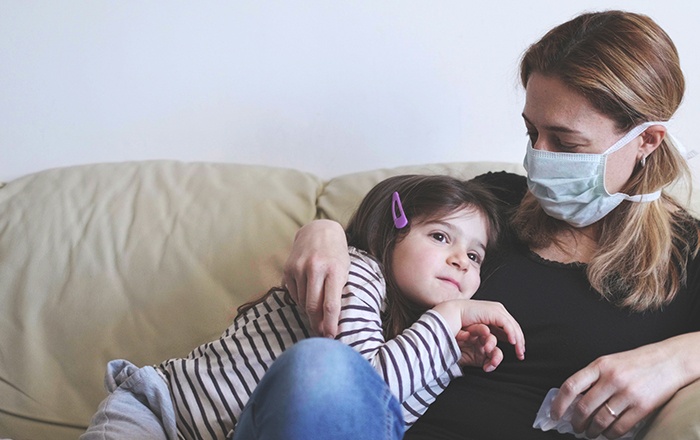
Helping Kids Cope During the Pandemic
Do you feel like your world has been turned upside down?
The COVID-19 pandemic is creating an escalation in anxiety, fear and depression for the entire population, both young and old. It’s a traumatic experience for everyone, regardless of whether they were experiencing mental health challenges prior to the crisis.
The highly trained therapists at North Shore Child & Family Guidance Center are dedicated to serving their clients during this enormously difficult time. While our buildings are closed, we’re conducting therapy sessions via phone and video conferencing.
Here’s just one story of how this new process is working to support the children and families in our local communities.
One of our therapists was concerned because her client, 16-year-old Heather*, had left her grandmother on Long Island to be with her mother in a Midwestern state when the crisis first took hold. Heather normally lives with her grandmother, but since the elder woman was home recovering from COVID-19, the entire family felt it was best for Heather to stay with her mom.
The Guidance Center therapist contacted Heather on the phone and set up a video session.
Heather has pre-existing anxiety and depression issues, and the pandemic was making her symptoms even worse. She was understandably afraid about the health of her grandmother, whom she had lived with since she was a young girl. Although she was relieved to be spending time with her mother, she felt guilty about leaving her grandmother behind.
During the video session, Heather told her therapist that she had been having trouble getting out of bed in the morning because she felt so sad and exhausted. The therapist worked with Heather to develop a plan of action so that she could use her coping skills. They talked about setting up a healthy routine – getting up at a reasonable hour, showering, eating, taking walks and writing in her journal.
Heather was able to realize that, despite the many things that are not in her control, she did have the power to make wise choices to support her mental health. The therapist also scheduled a video session with Heather and her mother, so they both will learn how to communicate and support each other during this very stressful time.
All of the therapists at the Guidance Center have reached out to their clients, setting up appointments so they can continue their paths to healing. They have also taken on new clients who are struggling with COVID-related fears.
If your children or teens are experiencing anxiety, depression or other challenges, whether or not they are related to the pandemic, we are here to help. Call (516) 626-1971 or email info@northshorechildguidance.org.
*Not her real name.

Strategies on Reassuring Your Family
- You are the best role model for your children, so when speaking about the epidemic, remain calm and reassuring.
- Remind them that scientists, doctors and other experts are working every day to come up with treatments for the disease, and that we can trust they will find the best solutions.
- Ask them what they have heard about the virus, so you can correct any misconceptions.
- Establish a daily routine that includes time for schoolwork, exercise, screen time, play and creative pursuits.
- Use this time together to establish some new family traditions, such as game night or movie night.
- Expect your kids (and teens too) to need extra attention and love during this trying time.
- Be sure to incorporate self-care practices. You cannot take care of others if you are not in good health, both mentally and physically.

“The Weather Channel and COVID-19,” by Andrew Malekoff, Blank Slate Media
One of my favorite phone apps is the Weather Channel. I check it every day, sometimes several times a day, to track the temperature, wind and precipitation in my zip code.
If I want to, I can search any zip code anywhere. It helps me to prepare for when I plan to walk or go bike riding. It is also helpful to see how the weather conditions might affect my commute to and from my office at North Shore Child & Family Guidance Center or when I plan to travel anywhere in New York or beyond.
On the bottom of the opening page of the app there are icons that lead you to a quick view of hourly and daily weather conditions, as well as radar. I usually stick with hourly and daily views. I have looked at the radar page, but I haven’t figured it out yet.
The hourly and daily icons are presented in a gray outline and the radar icon in blue. I’m writing this on a cloudy and foggy morning, with light rain all day. I just checked the hourly icon to see if the rain is going to stop so I can take a walk. Sometimes I like to walk in the rain. But not today.
Tomorrow’s forecast is nice. I think I’ll wait until tomorrow morning to walk: no rain, temperature 50 degrees and wind ESE only 4 MPH. Perfect!
As I clicked back to the homepage, my eyes caught an icon I hadn’t noticed before. The new icon is all red and it reads “COVID-19” with a solid red image that represents the virus. I clicked it and came to a page associated with my zip code.
When I opened to the COVID-19 page it displayed confirmed cases and deaths associated with the coronavirus in Nassau County and the percentage increase of deaths since last week. Like the weather, it indicates the date and time of day for the report.
And then just below the Nassau County information, it provides the confirmed cases and deaths in all of New York State.
It took my breath away to see this little red icon on the Weather Channel. After all, checking the weather has always provided me with a momentary respite, a chance to look forward to a nice day or to prepare for a crummy one.
But the little red icon put a lump in my throat.
We are encouraged on social media every day with uplifting memes and inspirational quotations to count our blessings. We are advised to use telecommunications to interact with family, friends and colleagues.
Depending on the circumstance, technology enables us to reach out to students, clients, doctors, patients and customers.
At the same time, anxiety and fear is a constant companion. For some, more so than others. Particularly if you have loved ones with pre-existing health-compromising conditions or if you don’t know how you are going to pay the bills if this lasts much longer.
We can distract ourselves only so long. And, then we check the weather.
Andrew Malekoff is the executive director of North Shore Child & Family Guidance Center, the leading children’s mental health agency on Long Island. The Guidance Center is seeing new and existing clients via telephone and video during the COVID-19 crisis. To make an appointment, call (516) 626-1971. Visit www.northshorechildguidance.org for more information.

Dealing with the Stress of the Corona Outbreak and Quarantine
Featuring Elissa Smilowitz, WCWP radio, March 24, 2020
This show is a joint effort of Richard Solomon, Esq., WCWP 88.1FM, the Nassau County Bar Association, and the North Shore Child & Family Guidance Center to help all of us who are currently “sheltering in place” and “social distancing” during this difficult time.
(The Continuing Legal Education –CLE– course code appears both in the audio and visual portions of the show for those seeking credit).
Our expert is LCSW Elissa J. Smilowitz who discusses the psychological perspectives of the current pandemic. Questions were submitted in advance of the broadcast and involve establishing routines, reducing news consumption, taking care of yourself, the reality of children at home while parents need to tele-commute and other dimensions of the current situation. For attorneys, this is a opportunity to listen to a very timely CLE.
Speaking of CLE credit – you can find other classes from the Nassau County Bar Association on this channel using the following links:
Nassau County Bar Association’s (NCBA) CLE on the radio 2019 – Electronic Discovery 101 https://youtu.be/beK0GdpaJaQ NCBA CLE– 11-18-19
Part 1 of 2 –Thriving in the Music and Entertainment Business https://youtu.be/wh5tAvE9knw
Part two: https://youtu.be/zh0x6FeIMRY for more information, please visit: https://northshorechildguidance.org/
Please note that Elissa is the coordinator of triage and emergency services making her highly qualified to discuss this topic.
This class is appropriate for everyone facing the challenges of the outbreak and are looking for validation of the difficulties and strategies to stay calm and move forward. Stay safe and please follow all guidelines published by the various authorities.
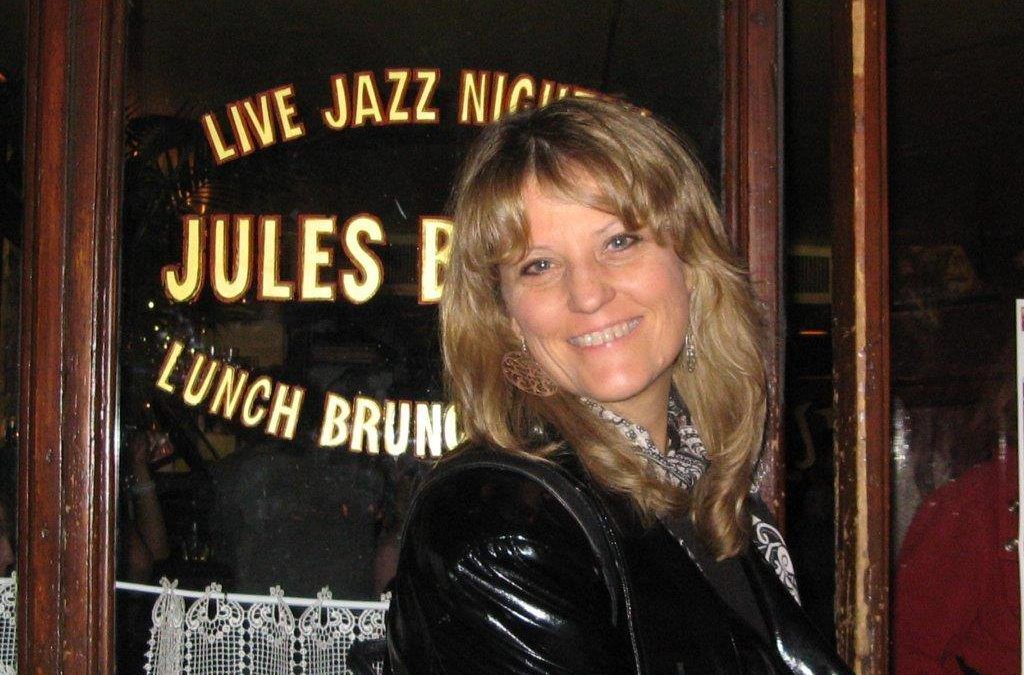
Kids First: Talking with Kids About Coronavirus
By Jenna Kern-Rugile is Director of Communications at North Shore Child Guidance – Blank Slate Media, March 28, 2020
Everyone, regardless of their age, has been thrown for a loop by this strange, new reality we are all living in. The coronavirus — in particular, COVID19 — has impacted our lives in ways we never could have anticipated.
This is an especially scary time for kids, whose routines have been turned upside down. But how do we make sure our children aren’t overwhelmed by fear of this disease?
First, some good news: So far, it appears that the virus produces mild symptoms in children. It has been serious (and yes, even deadly), but the vast majority of people who have died have had significant underlying health issues.
Of course, we can’t be certain what will unfold as the virus continues to spread globally. And, even if they are reassured that the virus is unlikely to cause them direct harm, children are very worried about their parents and grandparents.
With so much still unknown, it’s hard not to let the worry train go off the rails.
Whether you are just mildly concerned, extremely worried or somewhere in between, it’s crucial that you remain calm so that you don’t burden your children with unnecessary angst.
“As a parent, you need to be very careful not to put your fears and anxieties onto your child,” said Dr. Sue Cohen, director of Early Childhood and Psychological Services at North Shore Child & Family Guidance Center. “Even if you’re feeling very anxious, you don’t want to catastrophize.”
What you choose to tell your child depends in part on their age. “Give them information in amounts they can handle according to their developmental level,” said Cohen. “There’s no need to bombard them with the whole CDC report. They need bits of information that are easily understandable.”
It’s important to clarify any misconceptions they may have, she added. “Ask your kids what they have heard about the virus, so you’ll understand where their fears are coming from. As is the case with any situation, let them know you are available to speak to them about any concerns they might have.”
You want your kids and teens to feel like they have some power when so much is out of their control. One way to do that is to share with them the best hygienic practices to prevent them from catching the virus, as well as a cold or any type of respiratory illness. Said Cohen, “Be their role model when it comes to hand washing and other preventive measures.”
Some other helpful tips:
• Create a daily schedule that lays out time for such activities as schoolwork, walks and exercise, screen time, chores, meals and creative time.
• Try to get your kid outside each day, as weather permits. Though they shouldn’t be playing with friends, they can play with each other, with you or on their own — but don’t be surprised if they need you more than usual.
• Use technology to keep them connected to their friends, grandparents and other important people in their lives. Social distancing does not need to mean social isolation.
• It’s a great time to encourage reading. You can even do a family “read-in,” where you choose a book appropriate for everyone and take turns reading, or listen together to an audiobook.
• Your local libraries may be closed, but they’re still a wonderful resource. Visit their websites to learn about activities you can do to keep your kids happy while they learn and play.
• Encourage your children to take up a new hobby or explore something they have expressed interest in. Many different companies are providing free classes in art, yoga, music and a slew of other activities.
• Keep their exposure to the news limited, which is good advice for adults, too.
• If your child’s fears are intense, contact North Shore Child & Family Guidance Center, which can provide therapeutic services remotely.
How to Get Help
North Shore Child & Family Guidance Center is available to help you and your children handle the heightened anxieties that are prevalent during this difficult time.
Their therapists are seamlessly conducting sessions for both new and existing clients via telephone and video conferences.
Call the Guidance Center at (516) 626-1971, or email info@northshorechildguidance.org. For more information, visit www.northshorechildguidance.org.
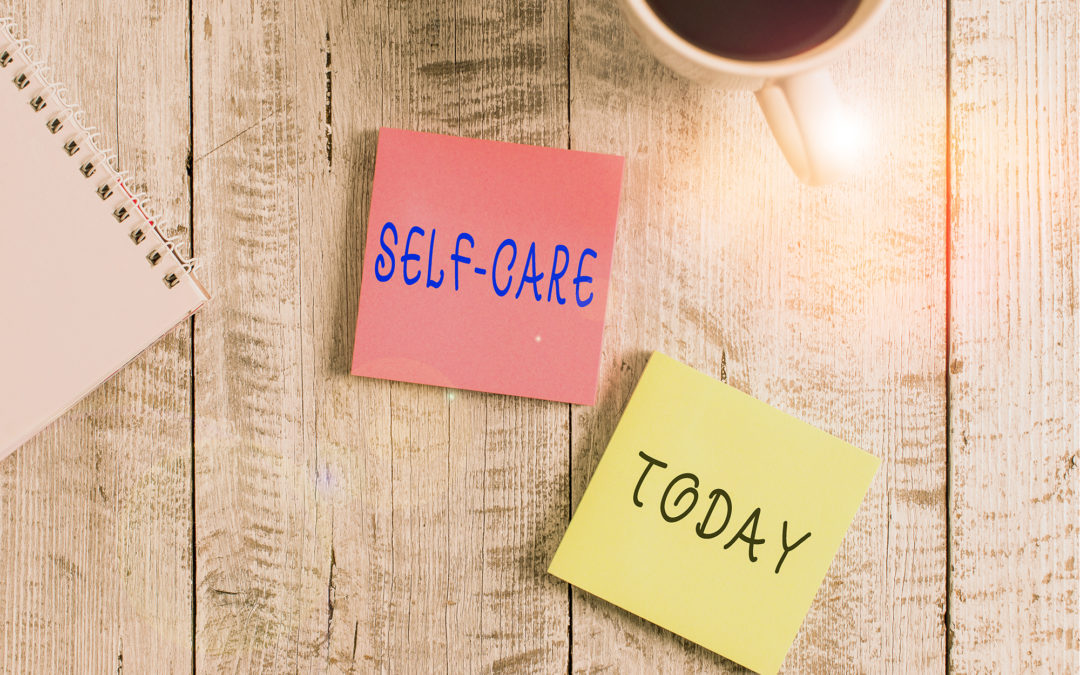
#CORONATHERAPY – How to Manage Our Own Fears and Anxieties During This Pandemic
By Jennifer Pearlman, LMHC at North Shore Child & Family Guidance Center
I keep waiting for this to end so I can tell my family and friends about this crazy, unrealistic movie I watched about the entire world shutting down over a contagious virus called COVID-19. And then I must remind myself that this is not a movie, it is the current reality of the entire world.
Everyone is now in a scramble, trying to adjust to the “new normal.” We are all being severely impacted by this pandemic in very real, serious ways. Loss of life, loss of jobs, loss of stability and security, loss of education, loss of business, loss of human contact and socialization and loss of control. That is a lot of loss.
While many people are making sure to take care of their physical needs (washing their hands, stocking up on food, social distancing, etc.), we need to take care of our emotional needs as well. We are in completely unchartered territory and, in a matter of days, we have gone into a state of complete uncertainty, fear and unpredictability. There is an understandable and palpable increase in people’s feelings of anxiety and depression.
The question is, how do we make sure to address our emotional needs during this crisis? Often, we go into “autopilot” mode and focus on taking care of everyone else’s needs, but we manage to let our own needs fall to the wayside. As therapists, we feel this need to take care of everyone else’s anxiety and panic, to help others through this crisis. We are wired to help people.
The anxiety and panic that people are experiencing is so real and so palpable. We have no idea how things will play out. Many of our clients are reaching out for help. Many parents are at a loss as to what to tell their children, or how to help their kids when their own anxiety levels are through the roof.
As therapists, it is imperative that we remember that in order to be able to take care of others, we must take care of ourselves as well. I’ve had so many fellow therapists reach out asking how they are supposed to help their clients through this crisis, when they themselves are falling apart and barely functioning. I am going to give a couple of suggestions that I have personally found extremely helpful.
1. NORMALIZE YOUR OWN ANXIETY: You are not superhuman and it is COMPLETELY NORMAL to be feeling a tremendous amount of anxiety over the change, uncertainty and fear surrounding this new pandemic. Trying to “get over it” or minimizing your anxiety is only going to make it worse. Think of what you would tell your clients. Just as you would validate your clients’ anxieties surrounding what is going on, make sure you are validating your own anxiety as well.
2. IDENTIFY TRIGGERS AND LIMIT THEM AS MUCH AS POSSIBLE: The news media and social media are two of the biggest triggers that have been raising people’s anxiety, panic and hysteria. While it is important to stay up to date and know what is going on (mandatory quarantines, shutdowns, school closures and more) it is not necessary to incessantly check every single update and every new confirmed case of the Coronavirus. When the news puts up videos of empty shelves in grocery stores, it leads people to a complete state of panic where they feel the need to rush out and stock up on inordinate amounts of food. There is a lot of misinformation out there, especially being posted on social media. If you are easily triggered by these things, please do yourself a favor and limit or take a break from it for as long as you need. There is nothing wrong with acknowledging that certain things are just not working for us. In fact, it can be extremely empowering and brave. Watching all these reports and seeing the barrage of messages posted on social media can be very detrimental to our mental health, and it is not productive.
3. SELF-CARE: I cannot stress this enough. Self-care is like oxygen during a time like this. We need it to survive. You may have to get a little bit creative in thinking about how to go about that (with everyone home and in tight quarters), but there are plenty of things to do that don’t involve going out to the spa and getting a massage. You can read for 30 minutes with a hot chocolate and your feet up on your couch; you can go run around the block for a jog; you can take a bubble bath and listen to relaxing music; you can Facetime a friend and just talk; you can watch your favorite movie…. Figure out what works for you and make sure to set aside some time to do it, daily!
4. FOCUS ON THE THINGS THAT ARE IN YOUR CONTROL: While there are many things that are completely out of our control, which has contributed to the fear a lot of us are feeling, there are still things that are very much in our control, and it is extremely helpful to put our energy and focus on that. We can control how much time we spend reading the news and going on social media; how we choose to use our time; how we take care of ourselves and our families; our perspective; and our attitude and behavior.
5. RADICAL ACCEPTANCE: ACCEPTING THE THINGS THAT WE CANNOT CHANGE. While difficult to achieve, this can be very liberating. We spend so much time and energy on things that are way beyond our control, which generally only increases our feelings of fear, anger and sadness. By fully accepting the way things are, we are not discounting our feelings around what is going on; we are simply acknowledging that it is beyond our control.
6. THERE IS NO ONE WAY TO GRIEVE: A close friend of mine suddenly and tragically lost a very close relative of hers. I remember going over there that night and, while there wasn’t much I could say other than just hug her and cry with her, I remember the one thing I told her family. There is no one way to grieve. Everyone has different responses to trauma and grief, and we need to accept where people are in the process. The same is true for what is going on now. There is no one way to handle a crisis. Everyone needs to figure out what works for them, and we need to be tolerant and accept people’s responses, even when they vary greatly from ours. Some people will need to talk about it a lot, while others prefer not to. Some will choose to self-quarantine out of precaution, others will choose not to. There is no one right way. Remember that. Don’t impose your opinions and beliefs on others, just be there to support each other through this really hard time. We are all in this together.
7. BE PREPARED, NOT PANICKED: There is a big difference between taking precautions and being prepared and being panicked. Panicked is going out and buying 12 years’ worth of toilet paper. Being prepared is having enough supplies in the house in case there is a mandatory lockdown or quarantine for 14 days. The panic and mass hysteria are what leads to people feeling the need to hoard items and food so there is a complete shortage of certain supplies, further increasing the panic and hysteria. Take precautions. Prepare but try not to panic.
8. STRUCTURE: Even if you are in quarantine, it can be extremely helpful to add structure to your day. Wake up, get dressed, take a walk outside, do an exercise video, get work done on the computer, make lunch….create a routine for yourself that works and try to stick to it as much as you possibly can.
9. SOCIAL DISTANCING DOESN’T MEAN SOCIAL ISOLATION: Just because we need to physically distance ourselves from others doesn’t mean we need to isolate. Pick up the phone and reach out to family and friends. FaceTime those who are close to you. It can be extremely lonely to be at home and not be able to go out. Make sure to reach out and find other ways to connect to people.
10. TAKE ONE DAY AT A TIME: Don’t start thinking eight months down the road and catastrophizing that your kids are never going back to school. Focus on putting one foot in front of another and taking one day at a time. You just need to get through today, and you will worry about tomorrow tomorrow. Mindfulness and meditation can be a really helpful way to train yourself to stay focused on the present moment. There are many apps available that can help you with this.
11. REACH OUT FOR HELP IF YOU NEED: There is no shame in acknowledging you need help. Almost all therapists and agencies are now offering Telehealth, so you don’t need to leave your home to get the support.
While these are extremely trying and scary times for everyone, this is going to pass. It may take some time, but we have survived pandemics in the past and we will survive this one as well. We are all in this together. Sending lots of love and support everyone’s way.
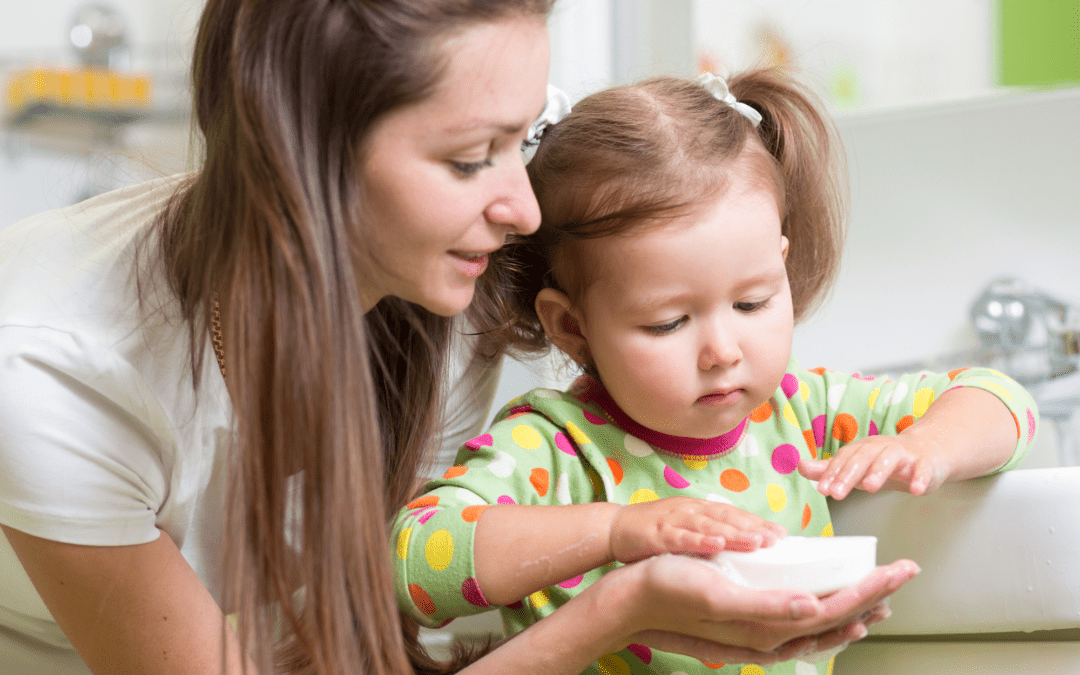
Talking with your Kids About Coronavirus
It’s all over the news and social media. The coronavirus—in particular, COVID19—has people of all ages understandably concerned. When a director at the Centers for Disease Control and Prevention tells the public to be prepared for a “significant disruption” of their routines, it certainly raises red flags.
But how do we make sure our children aren’t overwhelmed by fear of this disease?
First, some good news to help ease your mind: So far, it appears that the virus produces mild symptoms in children. It has been serious (and yes, even deadly), but people who have died have had significant underlying health issues.
Of course, we can’t be certain what will unfold as the virus continues to spread globally. With so much still unknown, it’s hard not to let the worry train go off the rails.
Whether you are barely concerned at all, extremely worried or somewhere in between, it’s crucial that you remain calm so that you don’t burden your children with unnecessary angst.
“As a parent, you need to be very careful not to put your fears and anxieties onto your child,” says Dr. Sue Cohen, Director of Early Childhood and Psychological Services at North Shore Child & Family Guidance Center. “Even if you’re feeling very anxious, you don’t want to catastrophize.”
What you choose to tell your child depends in part on their age. “Give them information in amounts they can handle according to their developmental level,” says Dr. Cohen. “There’s no need to bombard them with the whole CDC report. They need bits of information that are easily understandable.”
It’s important to clarify any misconceptions they may have, she adds. “Ask your kids what they have heard about the virus, so you’ll understand where their fears are coming from. As is the case with any situation, let them know you are available to speak to them about any concerns they might have.”
Tips on Avoiding Viruses
Finally, share with them the best hygienic practices to prevent them from catching the virus, as well as a cold or any type of respiratory illness (see below). Says Dr. Cohen, “Be their role model when it comes to handwashing and other preventive measures.”
- Avoid close contact with people who are sick.
- Avoid touching your eyes, nose, and mouth.
- Stay home when you are sick.
- Cover your cough or sneeze with a tissue, then throw the tissue in the trash.
- Clean and disinfect frequently touched objects and surfaces using a regular household cleaning spray or wipe.
- Follow CDC’s recommendations for using a facemask.
- CDC does not recommend that people who are well wear a facemask to protect themselves from respiratory diseases, including COVID-19.
- Facemasks should be used by people who show symptoms of COVID-19 to help prevent the spread of the disease to others. The use of facemasks is also crucial for health workers and people who are taking care of someone in close settings (at home or in a health care facility).
- Wash your hands often with soap and water for at least 20 seconds, especially after going to the bathroom; before eating; and after blowing your nose, coughing or sneezing.
- If soap and water are not readily available, use an alcohol-based hand sanitizer with at least 60% alcohol. Always wash hands with soap and water if hands are visibly dirty.
Sources:
https://kidshealth.org/en/parents/coronavirus.html
https://www.cdc.gov/coronavirus/2019-ncov/about/prevention-treatment.html

